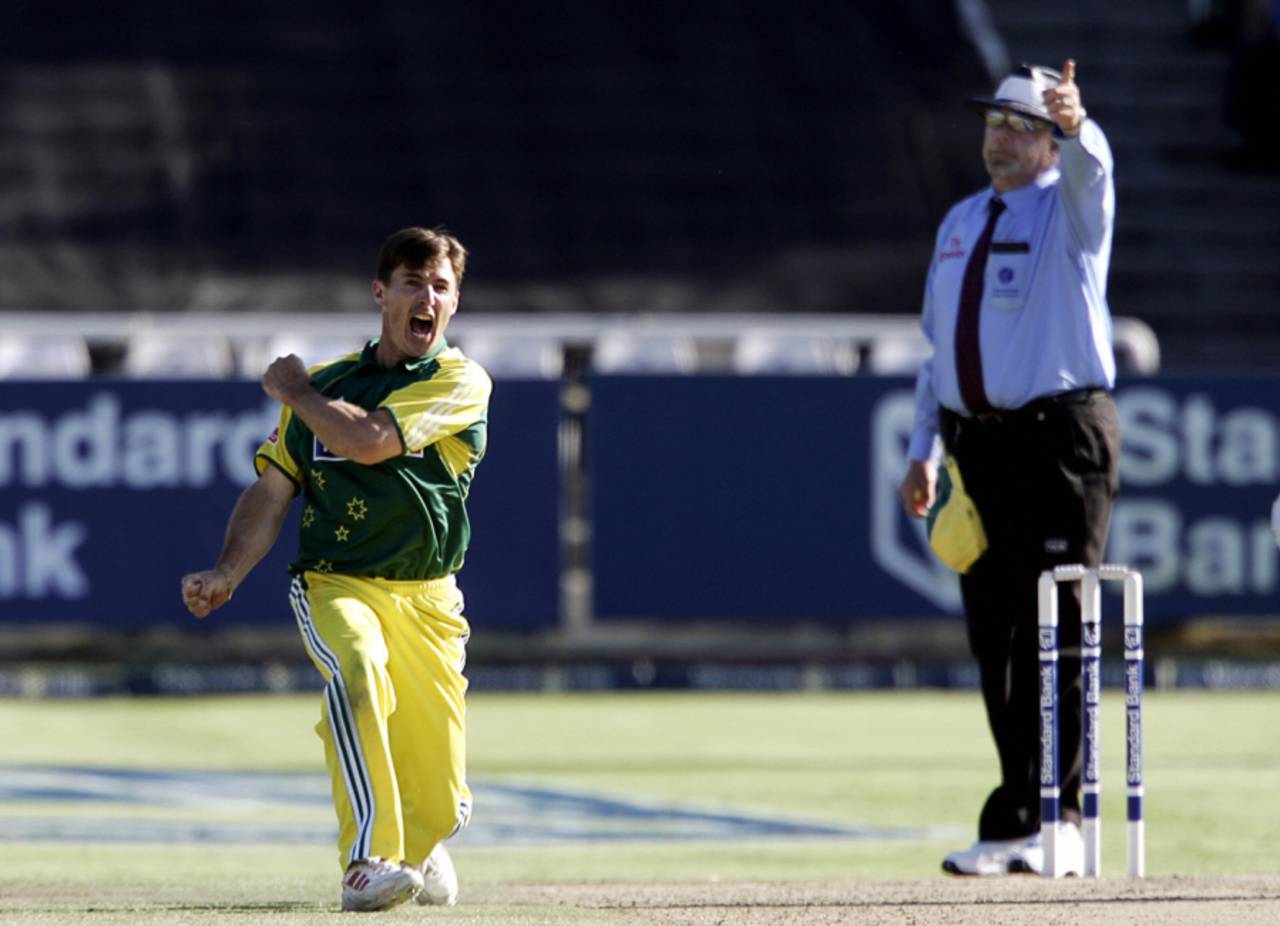Spin, bounce and turn - what we can expect from the 2007 World Cup
The slow bowlers who could star in the tournament
Dileep Premachandran
12-Mar-2007

Brad Hogg now finds himself Australia's slow-bowling mainstay • Gianluigi Guerica/AFP/Getty Images
Those that reckon there's only a bit-part role for slow bowlers in the one-day game clearly never watched Shane Warne bowl. The pre-eminent spinner of our age was as much a magician in coloured clothes as he was in whites, and those that witnessed him in action in the climactic rounds of the 1999 World Cup will never forget the manner in which he devastated both South Africa and Pakistan. Indeed, it's testament to Australia's allround excellence that they were able to make light of his withdrawal in 2003 - the diuretic pill was to help a vain man stay slim, supposedly - and win 11 on the bounce on their way to the trophy.
The man who partly filled Warne's gargantuan boots then was Brad Hogg, an artisan in comparison to the artist, but a very accomplished one at that. Four years on, Hogg will again be Australia's slow-bowling mainstay, using his variations in pace and a wonderful arm-ball that few pick to create doubts in batsmen's minds. With Andrew Symonds still on the mend from a bicep injury that needed surgery, the back-up could also be of the left-arm variety, with Michael Clarke having shown what he can do on pitches that offer some assistance.
There's no doubt though that it's the subcontinent that boasts of the best slow bowlers at this World Cup. Harbhajan Singh hasn't cut a swathe through sides in recent times, but his miserly economy rate builds up pressure at one end. His senior colleague, Anil Kumble, isn't quite the one-day performer he once was, but retains an uncanny ability to blow away batsmen who exhibit the slightest sign of reluctance when coming forward or playing back. In addition to the quicker one that has fetched India so many victims, Kumble is now much more comfortable slipping in the odd googly.
The offspinner's other one has created much consternation when Muttiah Muralitharan has bowled it, but with the laws being tweaked, batsmen have no option but to confront an additional weapon from a man who already possesses a handful. On his day, Murali will still run through a side, and Sri Lanka also have quality support in the form of Malinga Bandara. Tillakaratne Dilshan's offbreaks will be a factor, as will the left-arm spin that Sanath Jayasuriya spears in so effectively in the middle of the innings.
Pakistan have taken a gamble on Danish Kaneria, though the quality he has often shown at Test level hasn't translated itself into any worthwhile one-day performances. With Abdur Rehman not included in the squad, they'll rely heavily on Shahid Afridi - watch for the quicker one that crashes into the bat at over 80mph - and Mohammad Hafeez if the pitches are low and slow.
Bangladesh, who upset New Zealand in a warm-up game and remain quietly confident of meting out the same treatment to India or Sri Lanka, aren't short of options either. Mohammad Rafique has been a world-class left-arm spinner for years now, with advancing years not blunting his edge, and the likes of Abdur Razzak and Saqibul Hasan will also force the batsmen to take risks as they look to press on with the scoring.

No one has captivated the neutral quite like Monty Panesar has•Gareth Copley/PA Photos/Getty Images
Left-arm is very much the name of the spin game at this World Cup, and two of the finest proponents, Daniel Vettori and Monty Panesar, will go head-to-head as New Zealand and England fight for supremacy in Group C. Vettori has only two World Cup wickets, bizarre given his talent, and he will surely reap a richer harvest in the Caribbean. As for Monty, no one has captivated the neutral quite like he has since dismissing Sachin Tendulkar on Test debut at Nagpur, and the signs are that the transition to the more regimented type of bowling expected in one-dayers hasn't been quite as painful as expected.
Three decades ago, a traumatic Test defeat in Trinidad against India caused Clive Lloyd to jettison any thoughts of spin in the West Indian bowling plan. With the accent solely on pace, a generation of slow bowlers came and went without even being a blip on the radar, but the circle is now complete. As they bid to win the World Cup for the first time since 1979, the hosts will rely heavily on slow bowling, with the offspin of Chris Gayle and Marlon Samuels absolutely central to Brian Lara's plans of restricting the opposition.
But what of the best team in the world, if you go by the ICC rankings anyway? There may be hundreds of young kids looking to imitate Warne's ripping leg breaks on the playing fields of South Africa, but not one of them has made it into the squad. The best they have as far as slow bowling goes are Robin Peterson and Graeme Smith, and it wouldn't be unfair to say that neither would be anywhere near the XI if they couldn't bat a bit - more than a bit in Smith's case. No one's been able to figure out what sort of surfaces to expect once the competition gets underway, but if the low-slow predictions come true, South Africa concede a massive advantage. Lack of nerve cost them two tilts at the title. This time, it could be their lack of variety.
Dileep Premachandran is features editor of Cricinfo